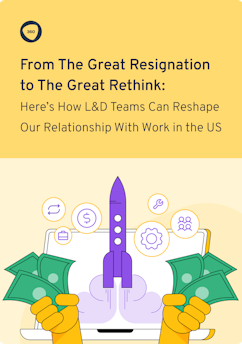People Demand Fulfilling Work, but Not All Employers Are Able to Provide It
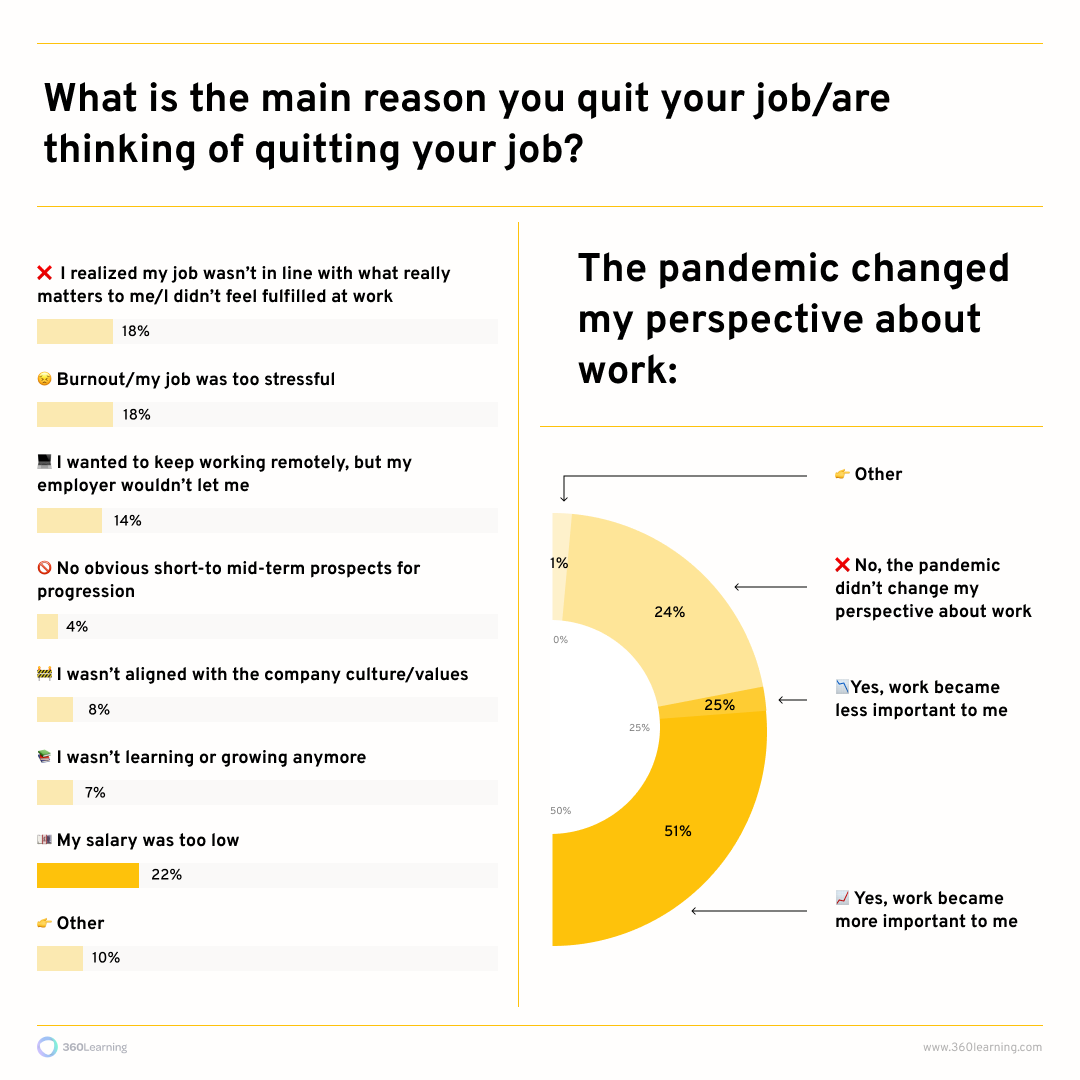
As part of our ongoing series analyzing the Great Resignation, we surveyed 1,058 Americans about their feelings regarding their work lives. Roughly half of them had either quit their job in the last nine months, or were considering doing so. We wanted to dig into what’s motivating people to say ‘goodbye’ to their jobs, and how L&D teams can help employers create environments that inspire employee loyalty.
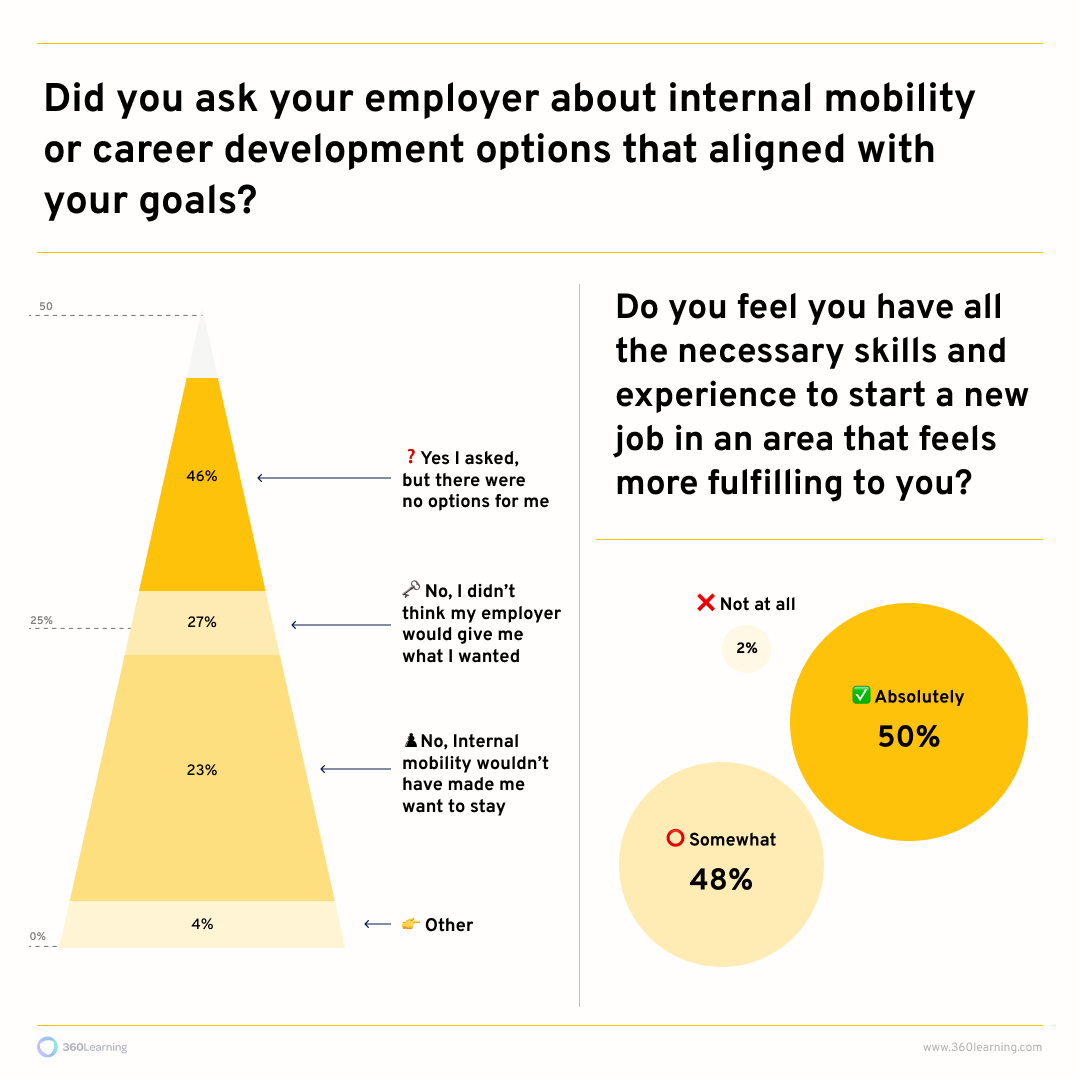
Read on for a look at what’s driving these resignations—but more importantly, how L&D teams can help employees feel more fulfilled on the job. We'll see how employees feel they can get up to speed in a new job where they don't have as much prior experience—but a lot of passion—and reaffirm that for Americans, even during a pandemic, their work lives are a big part of their sense of self:
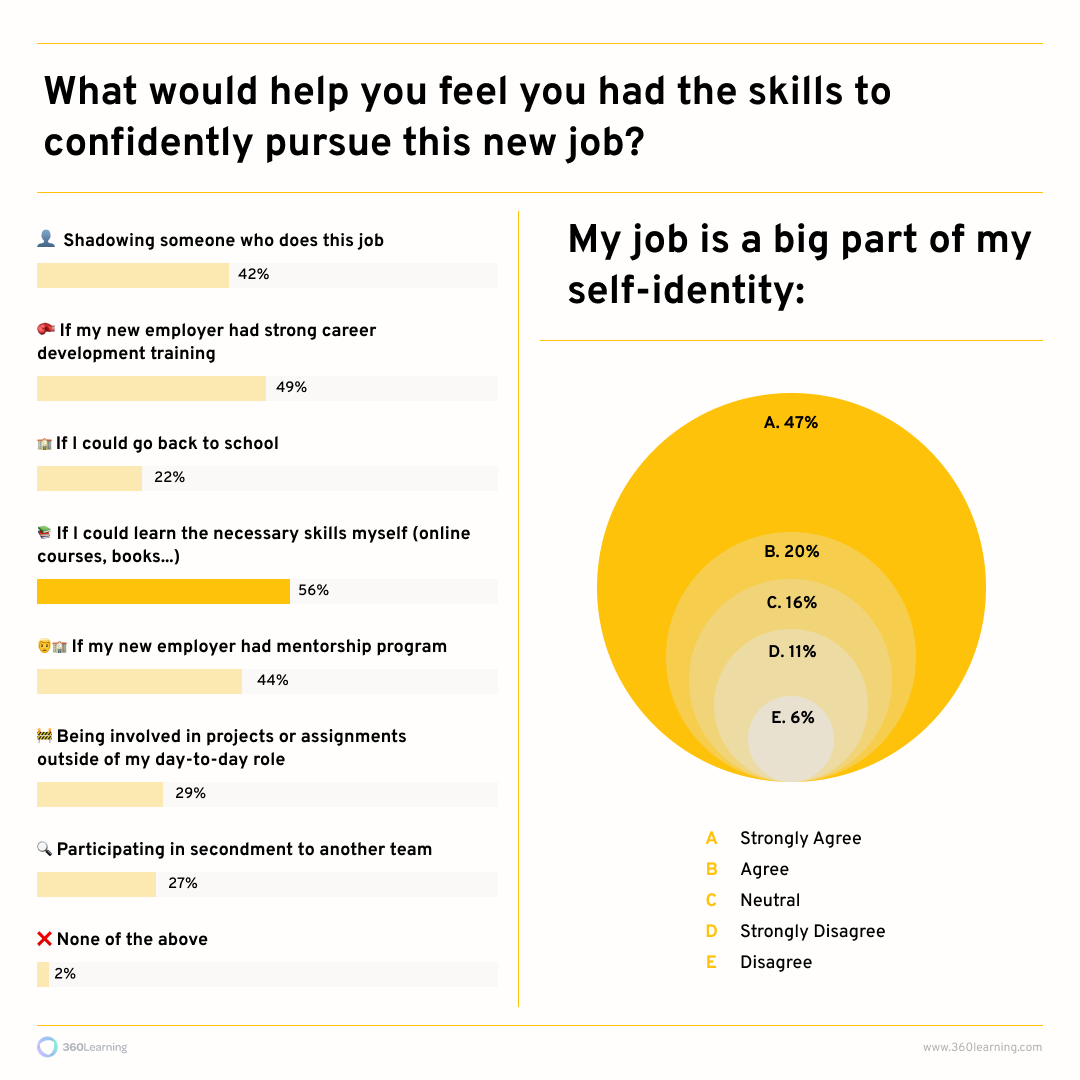
Finding fulfilling work
Contrary to some recent headlines, our respondents indicated that work was still an important piece of their identity, and even that work became more important to them during the pandemic.
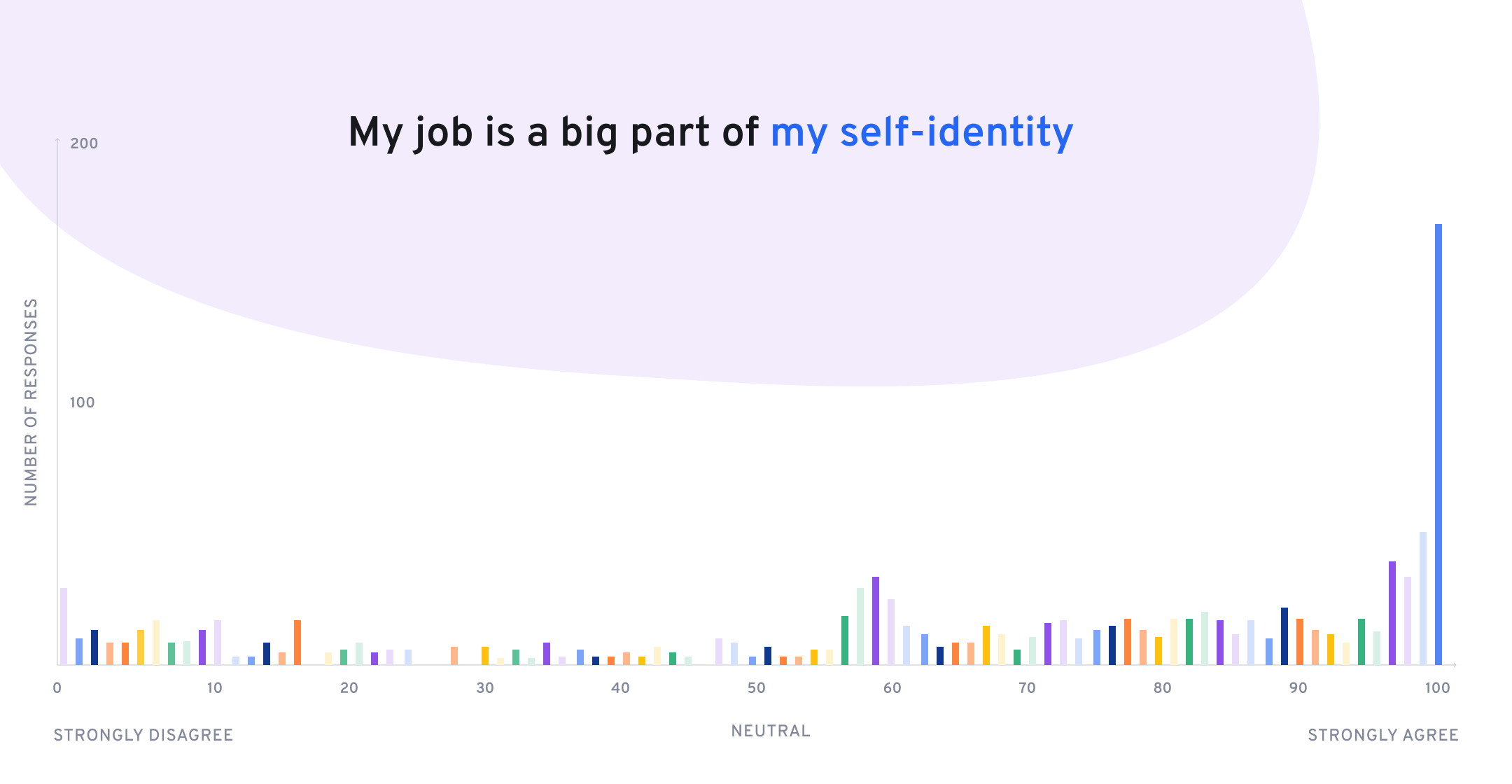
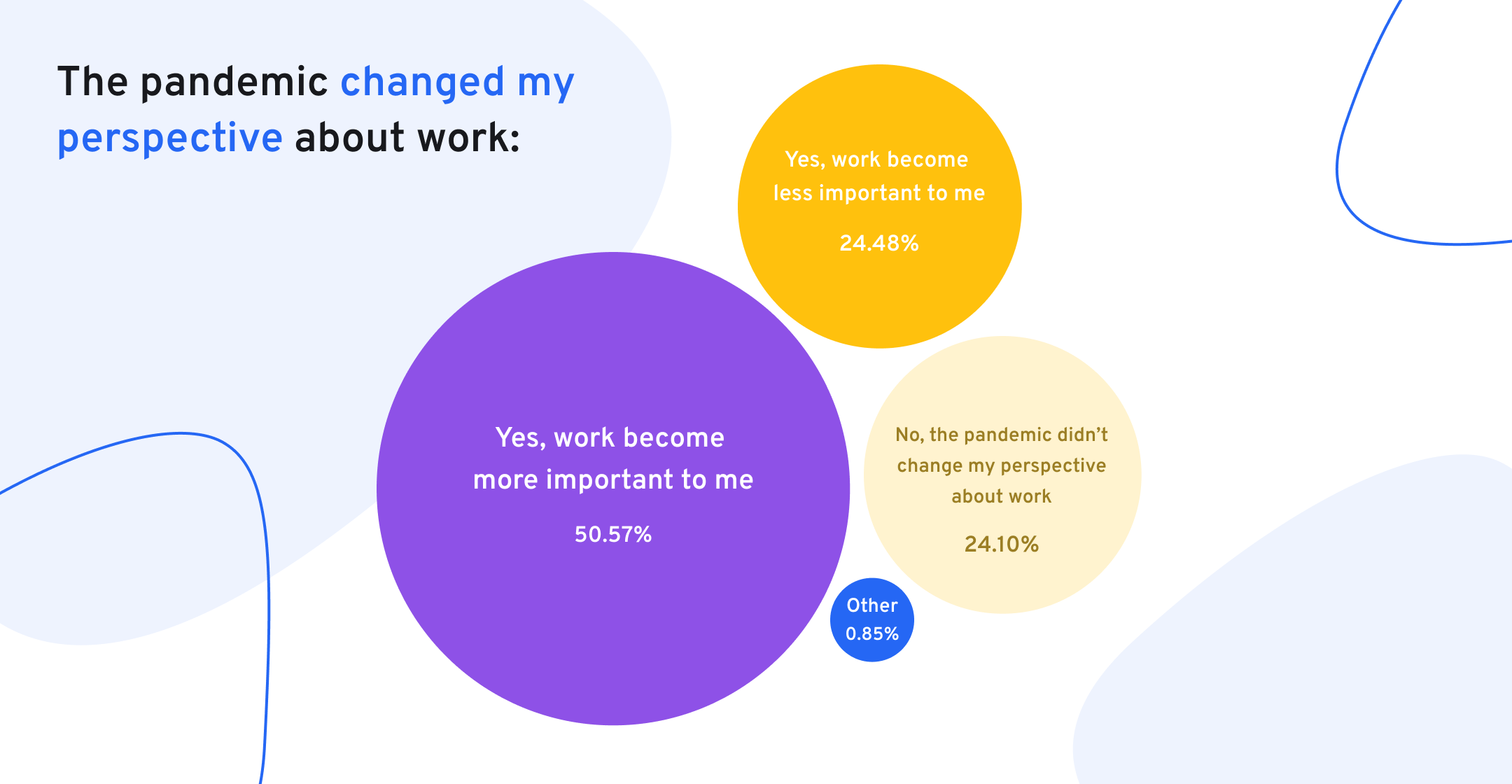
But, to understand the motivations driving the Great Resignation, we specifically sought out respondents (509) that had recently quit their job, or were thinking about it. For them, the third most cited reason was that their work was unfulfilling or not meaningful—the first two were about salary and burnout, respectively:
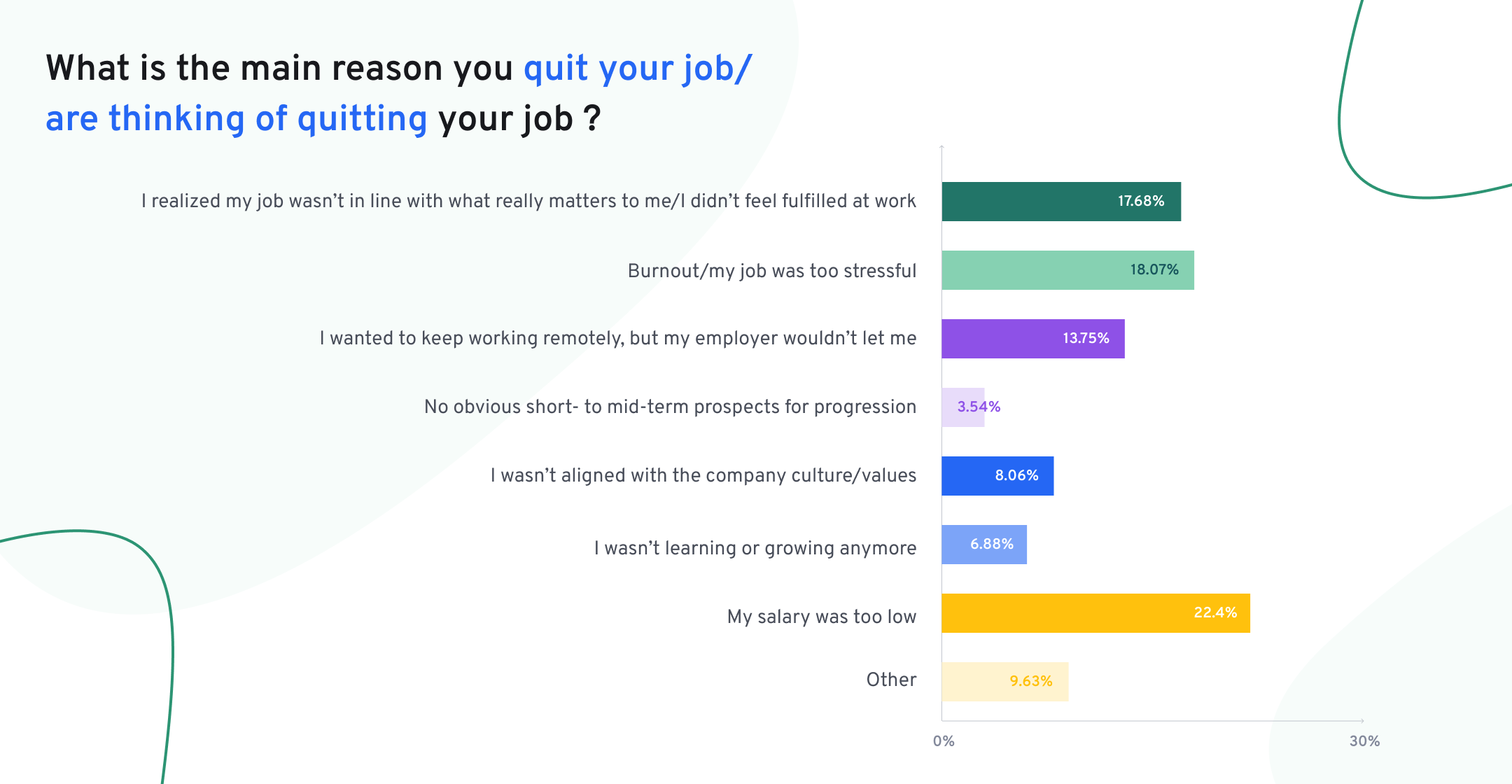
This suggests that it’s not that people want to work less—on the contrary, work matters to them a great deal. But what they do want—even to the point of quitting—is work that aligns with who they are and what they value.
But what they do want—even to the point of quitting—is work that aligns with who they are and what they value.
Internal mobility
But just because someone isn’t happy in their current position, doesn’t necessarily mean leaving their employer is their only option. Internal mobility is one way to help someone find the right fit without having to say goodbye. Yet, this didn’t seem to be a viable solution for our respondents; not only was this not an option for 46% of our respondents who left their jobs (or want to), nearly a third (27%) didn’t even bother asking.
Only 23% said they wouldn’t have wanted to stay even with internal mobility. That might be because about half of all our 1,058 respondents thought that being promoted was the only way to achieve new skills.
About half of all our 1,058 respondents thought that being promoted was the only way to achieve new skills.
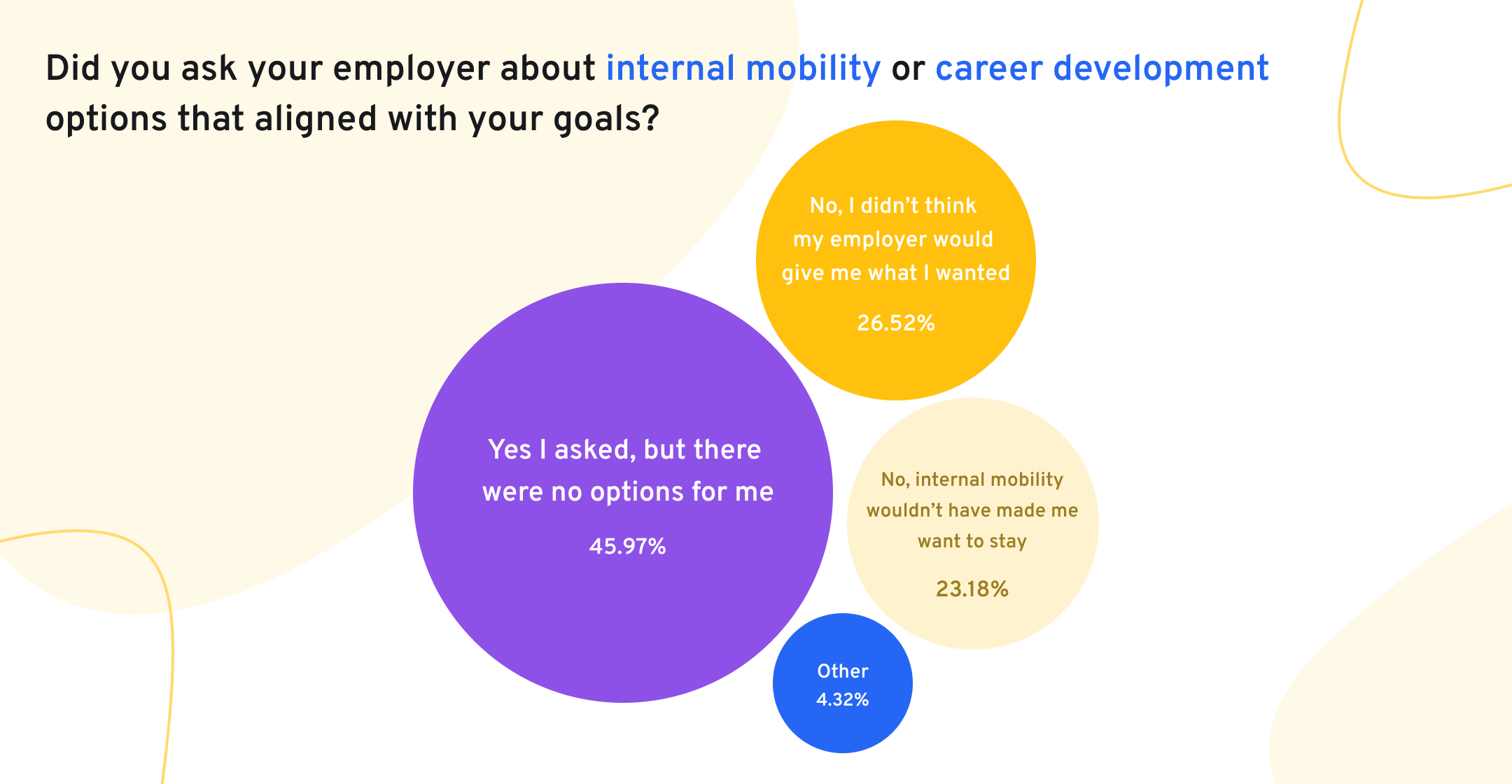
Skill development
But how confident are people that they can dive into their next, more fulfilling adventure? Half think they “absolutely” have the skills they need, but 48% are only “somewhat” sure—and 2% are convinced they absolutely don’t. This split stayed roughly the same, whether people wanted their next career move to be to start their own business, go freelance, or to change roles, companies, or sectors.
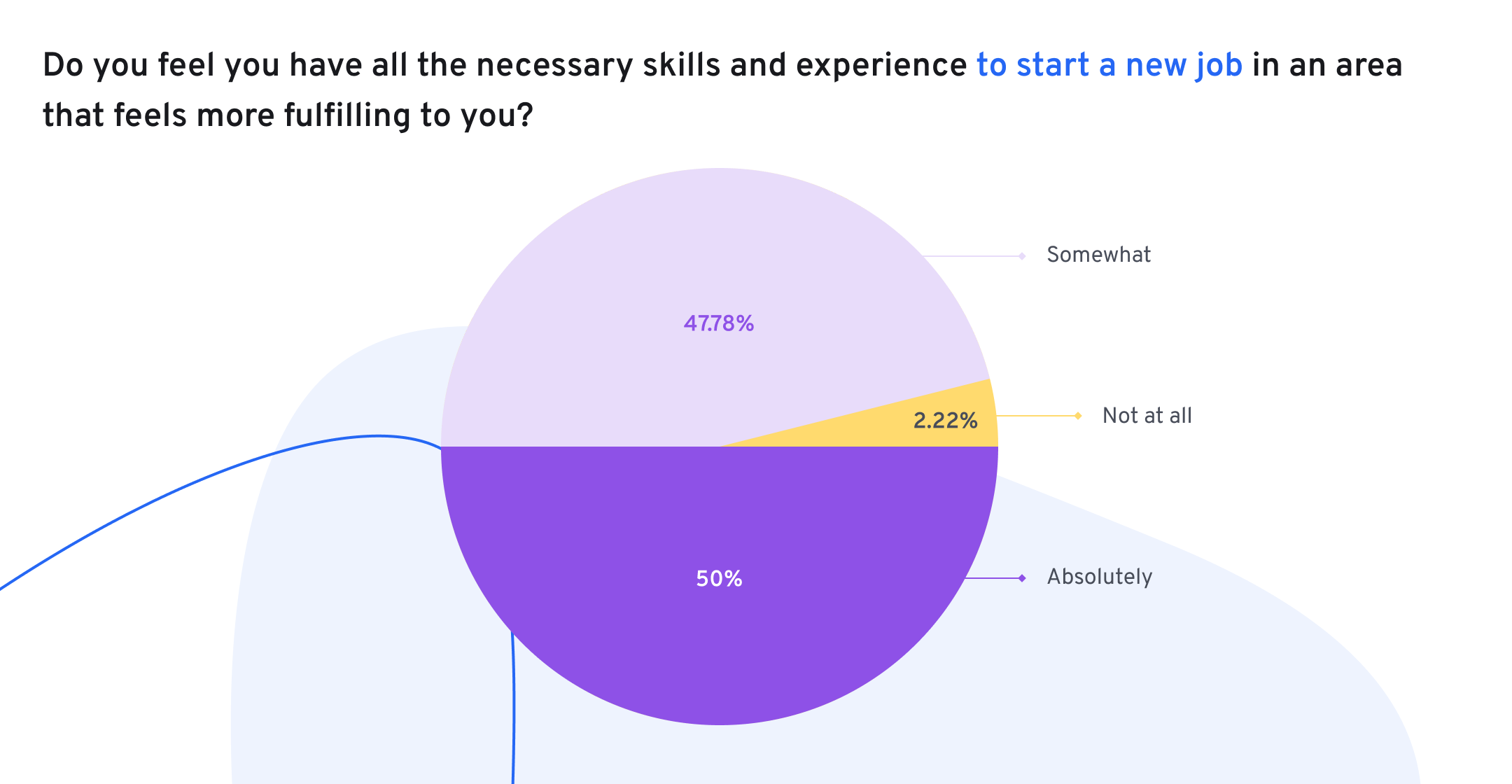
Of those that had doubts, it was self-directed learning, followed by a strong training and development program from their new employers, that respondents said would help. Going back to school was the least appealing option, highlighting the importance of learning on the job, in the flow of work, or at the very least, learning that can co-exist with employment.
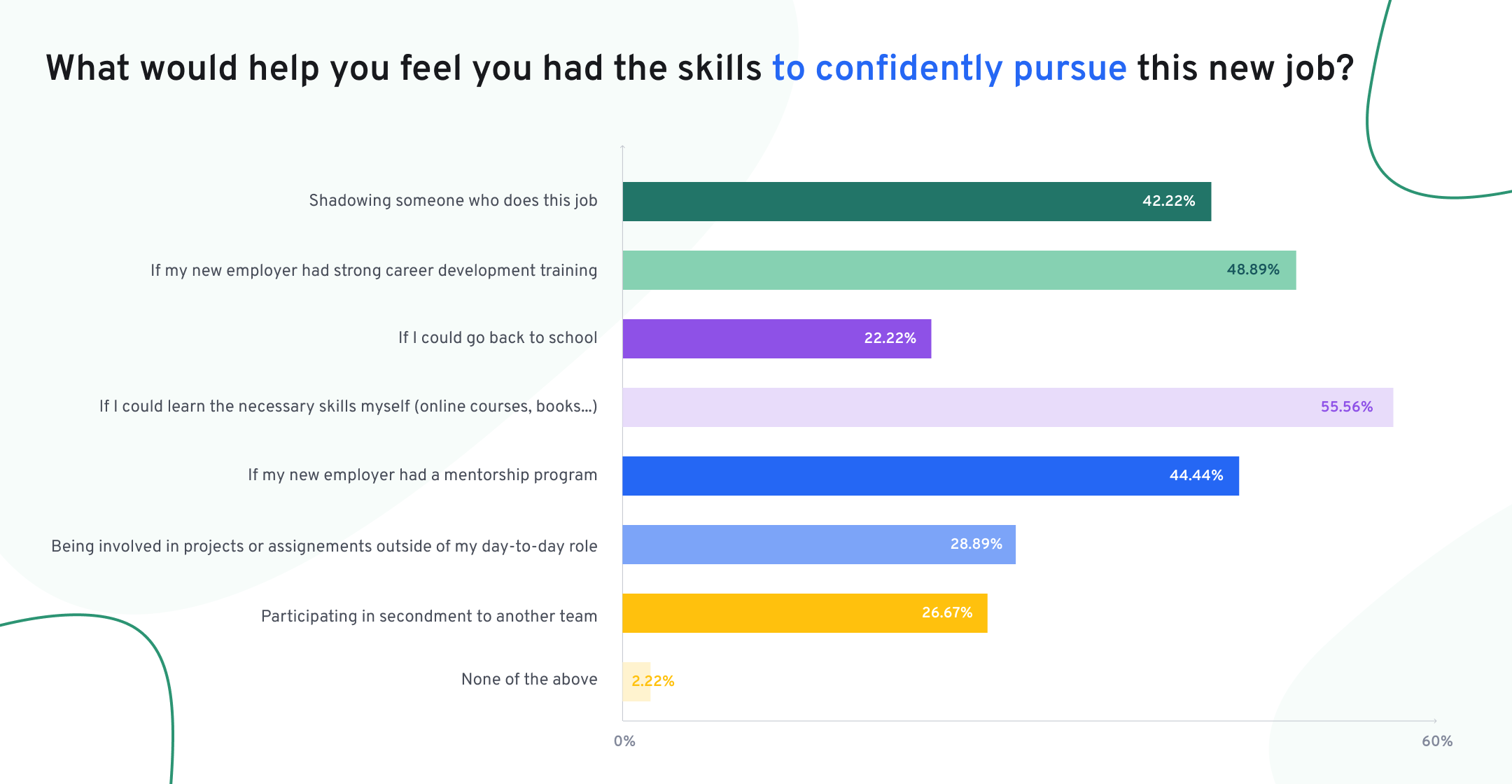
Going back to school was the least appealing option, highlighting the importance of learning on the job.
How L&D teams can help
Work is still an important part of people’s identities, and employees want to feel fulfilled on the job—to the point of moving on to a new employer—and internal mobility or professional development isn’t doing as much as it can to retain them.
As more and more people decide that work should be more than a “necessary evil” (as Mark Twain put it), employers can either let them leave and double down on recruitment at the expense of retention, or they can focus on building employee experiences that include growth opportunities, especially through self-directed learning.
They can also entice job-hopping employees who feel they have more agency than ever to reach outside their comfort zone with a strong training program. This creates a win-win situation: Happy, loyal employees and employers able to keep up with attrition rates. In this age of ‘squiggly’ careers, this flexibility will fast become the norm.
L&D teams should:
- Make sure career pathways are clearly defined for all employees, and that support systems are in place to help them achieve new milestones. You can read about how we set up career paths for our engineering team at 360Learning, here.
- Even for those who aren’t going to make an internal move right now, embrace the Learning Organization approach and continuous learning, where promotion isn’t the only way for employees to acquire new skills. You can see how the content marketing agency Animalz embraced skills development, internal mobility, and continuous learning for improved business outcomes, here.
- Set up training programs for motivated new hires that may not have as much experience as you’re used to, but who are ready to get up to speed through self-directed learning. Use your professional development training programs as key points in employer branding and during recruitment.
- Validate the experiences of all employees through a Collaborative Learning approach, where, through sharing skills and institutional knowledge, (job crafting) a wider range of employees might feel more fulfilled on the job.
- Provide opportunities for growth and development outside the traditional bounds of the L&D team through mentorship or coaching. We recently sat down with Shaun Krietemeyer, Director of Learning and Development at Opendoor, about how he creates lean and impactful learning through peer mentoring. You can read the full interview on how they put peer mentoring to work, here.
Additional resources:
- How Qualtrics Built a Competency Diagnostic Tool to Focus on the Right Development Priorities
- 3 Great Ways Cisco Empowers Employees To Navigate Career Opportunities
- How Gong Built a Performance Management Approach to Attract, Motivate, and Reward Ambitious People
- How Harry’s Decentralize L&D with Self-Directed and Collaborative Learning

Discover the key to 90%+ engagement rates
By downloading, you agree to our privacy policy.
